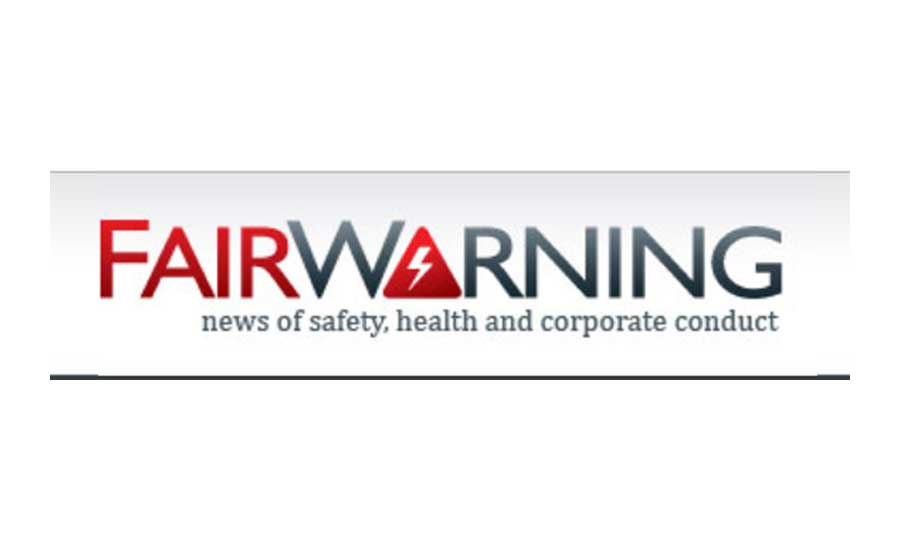A FairWarning Story
The Breath Test: Consumers pop air monitors in their shopping carts, but do they really work?

Posted with permission from Fairwarning.org:
For a huge swath of Northern California, the air suddenly became hazardous last November. Thick smoke from the most destructive wildfire in state history was delivering a secondary blow to nearly ten million Californians, some of whom turned to a new class of consumer air monitors to help keep them safe.
Public-health experts say such devices may play a role in reducing exposures to harmful pollutants like wildfire smoke — at least for those who can afford them and understand their limitations. Independent testing, though, has shown they might not work well enough yet to be worth the investment for most consumers.
Household air-quality monitors for indoor or outdoor use first began seeing mass production around 2013 and soon became popular in China. The market is much smaller in the United States — but maybe not for long, due in part to global warming and its projected impact on wildfire frequency and severity throughout the West.
“There are huge pollution problems in Chinese cities, and people want to know whether they should wear a mask or not when they go out,” says University of California, San Francisco professor John Balmes, a leading researcher on air pollution and its health effects. “I can see that in California, too, if we continue having wildfires like we did in October 2017 and November 2018.”
The devices are already widely available to online shoppers here, at prices starting around $200. So too are an expanding range of “smart” indoor air purifiers that include sensors of their own to automatically detect air-quality levels. They’re often used in tandem with monitors because they can remove fine particles produced by wildfires, cooking and smoking, also known as PM2.5.
Some of the new purifiers are sold by established home-appliance brands like Bosch, Honeywell and Kenmore. Many more are not. And among the current generation of consumer air-quality monitors, none come from household names.
Furthermore, while air purifiers can be vetted by the Association of Home Appliance Manufacturers’ Verifideprogram, which uses a standardized test to measure the rate at which devices deliver clean air, no such option currently exists for low-cost household monitors.
As a result, without third-party oversight to establish units’ accuracy, consumers are at the mercy of manufacturer claims.
Researchers at the Lawrence Berkeley National Laboratory, also located in the San Francisco Bay Area and subject to the same severe smoke events in recent years, decided in 2017 to see how some of the earliest consumer monitors stacked up against traditional “reference-grade” monitors used by regulatory agencies that cost tens of thousands of dollars.
In particular they tested how well the devices measured PM2.5 from a variety of common household sources including candles, cigarettes, cooking activities and dust.
They found that only four of the seven models evaluated were able to quantify pollutant levels “reasonably” well. In addition, all seven substantially under-reported or missed pollution events involving the very smallest particles, also known as ultrafines.
These particles are of concern to those who study air pollution and human health because they’re so small they can pass through lung tissue into the bloodstream, where they circulate like oxygen molecules.
Study author Brett Singer, staff scientist and leader of the Indoor Environment Group at the Lawrence Berkeley lab, said two of the three under-performing models were subsequently upgraded with new sensors that demonstrated greater accuracy in an as-yet-unpublished follow-up study.
Still, for the foreseeable future a failure to provide correct absolute values and the inability to detect ultrafine particles are likely to remain significant, if unacknowledged shortcomings of even the best consumer-grade air-quality monitors, Singer said.
Nonetheless he believes they can provide a worthwhile service by prompting users to run air purifiers or provide ventilation during pollution events. They also can indicate how successful those efforts are at improving air quality.
“People should just be aware that they’re not perfect,” Singer says. “They’re rough indicators.”
The study’s findings are borne out by similar testing performed in Southern California with funding from the U.S. Environmental Protection Agency. Program manager Andrea Polidori of the Los Angeles-area South Coast Air Quality Management District said today’s low-cost PM2.5 monitors provide “semi-quantitative” data and are best suited for detecting trends and large fluctuations.
For University of California at Davis professor Helene Margolis, an expert in air pollution and public health who did not participate in the Lawrence Berkeley study but has collaborated with Singer’s team on other projects, the flaws are fatal — for now, at least.
“I don’t think the sensors are ready for prime-time yet. I don’t think they’re providing the information that we necessarily need,” she says. “I also think these units are evolving very quickly, and they’re getting better. So maybe in five years, they will be something that every consumer should have.”
San Francisco-based Awair’s popular $199 indoor air monitor was among those to demonstrate improved performance in the Berkeley group’s second study.
“It’s not lab-grade technology, but I think there is some value in that it provides directional information” that can help users, particularly those who suffer from respiratory illnesses like asthma and chronic obstructive pulmonary disease, said head of product Dean Young.
Association of Home Appliance Manufacturers spokesperson Jill Notini notes that the comparatively mature air-purifier market is also changing to keep pace with growing demand for information about household air quality, especially particulate matter.
Beginning in October, the association’s certification program for air purifiers will begin publishing clean-air delivery rates relative to PM2.5 for the first time. Previously it targeted tobacco smoke, dust and pollen.
“Some manufacturers are talking about PM2.5 on their websites,” Notini says. “Now we’re calling it out to consumers. It seems like it’s becoming a lot more relevant, and there’s a lot more consumer interest.”
About FairWarning
This story was reported by FairWarning (www.fairwarning.org), a nonprofit news organization based in Pasadena, Calif., that focuses on public health, safety and environmental issues.
Looking for a reprint of this article?
From high-res PDFs to custom plaques, order your copy today!






